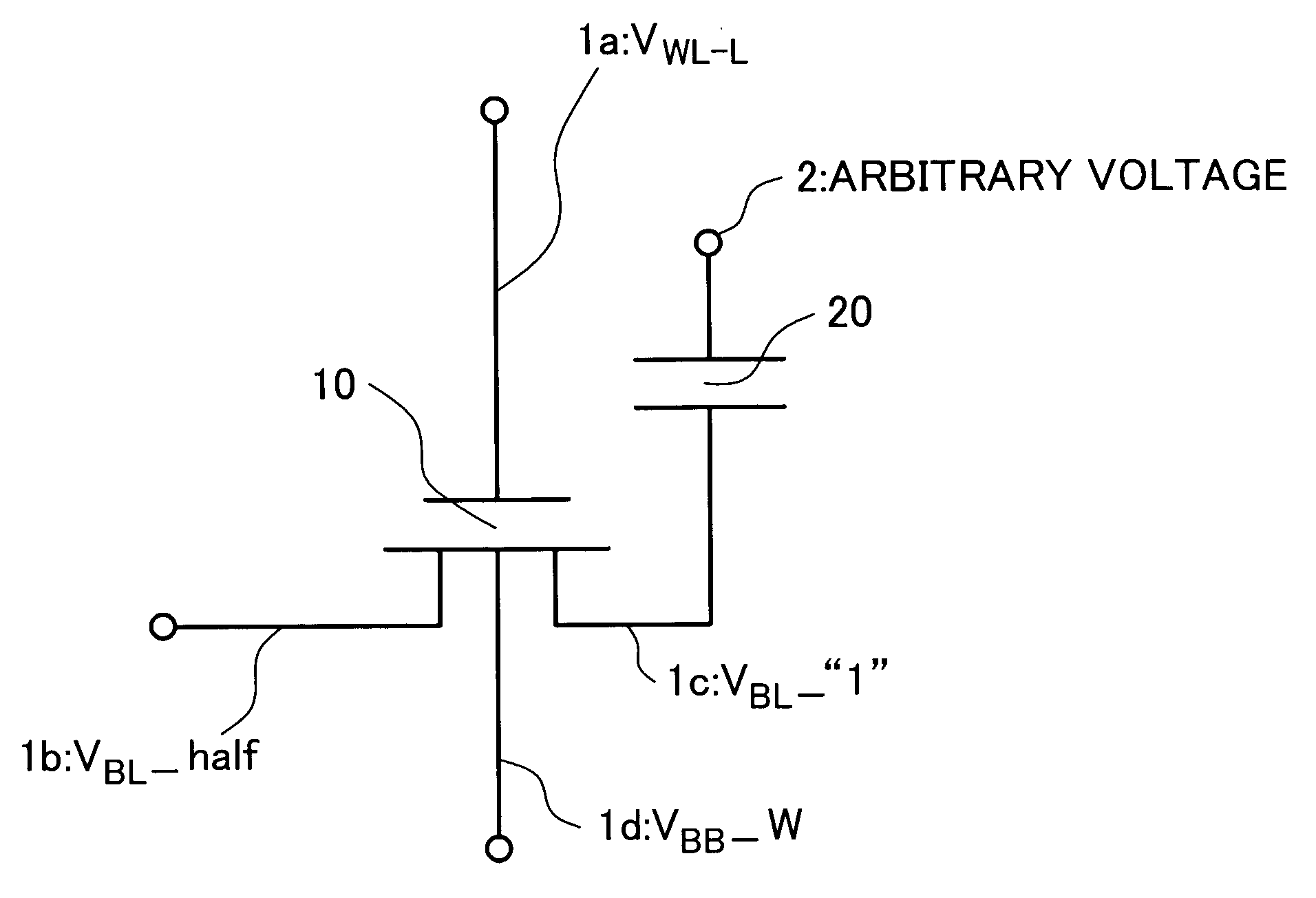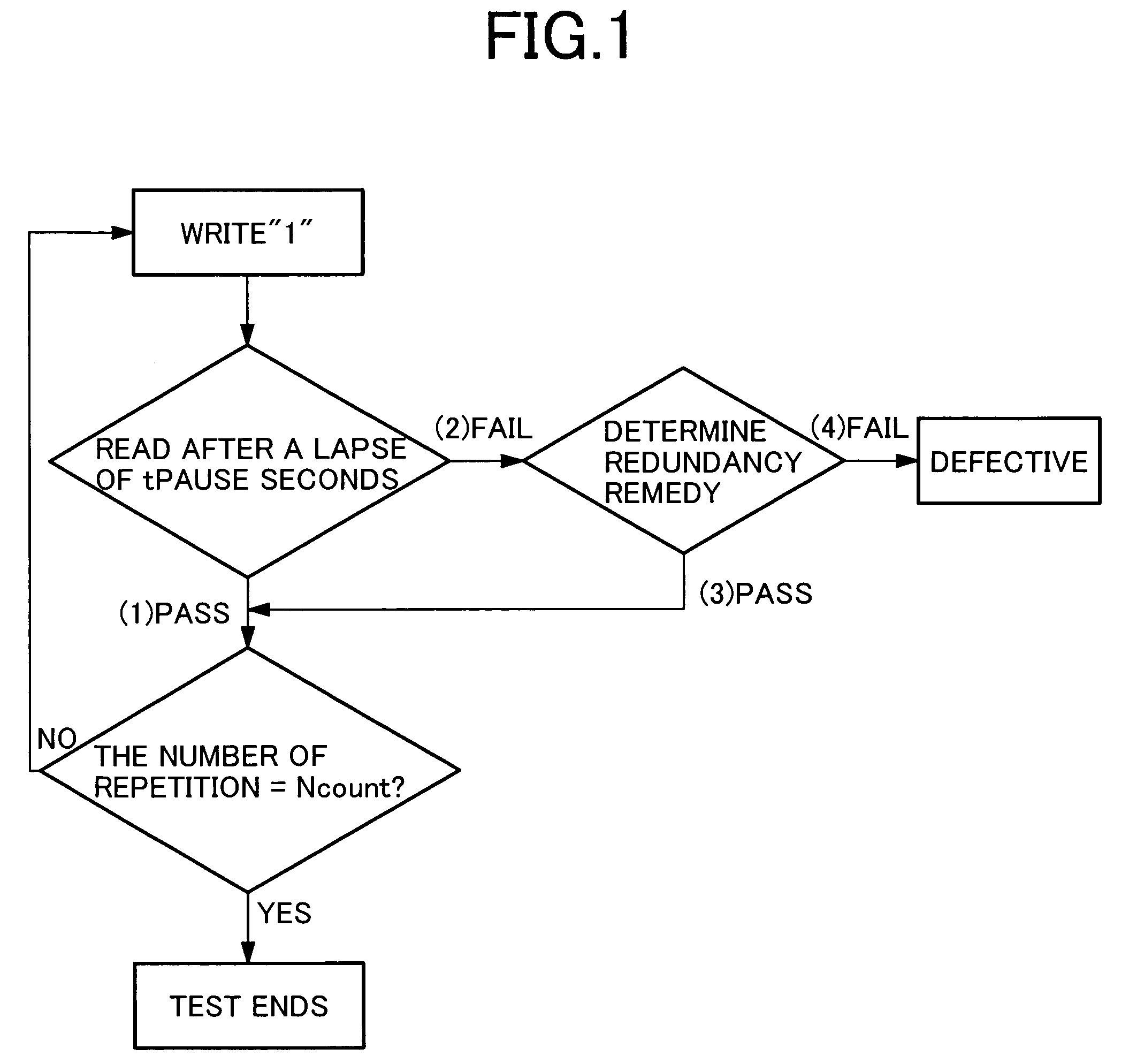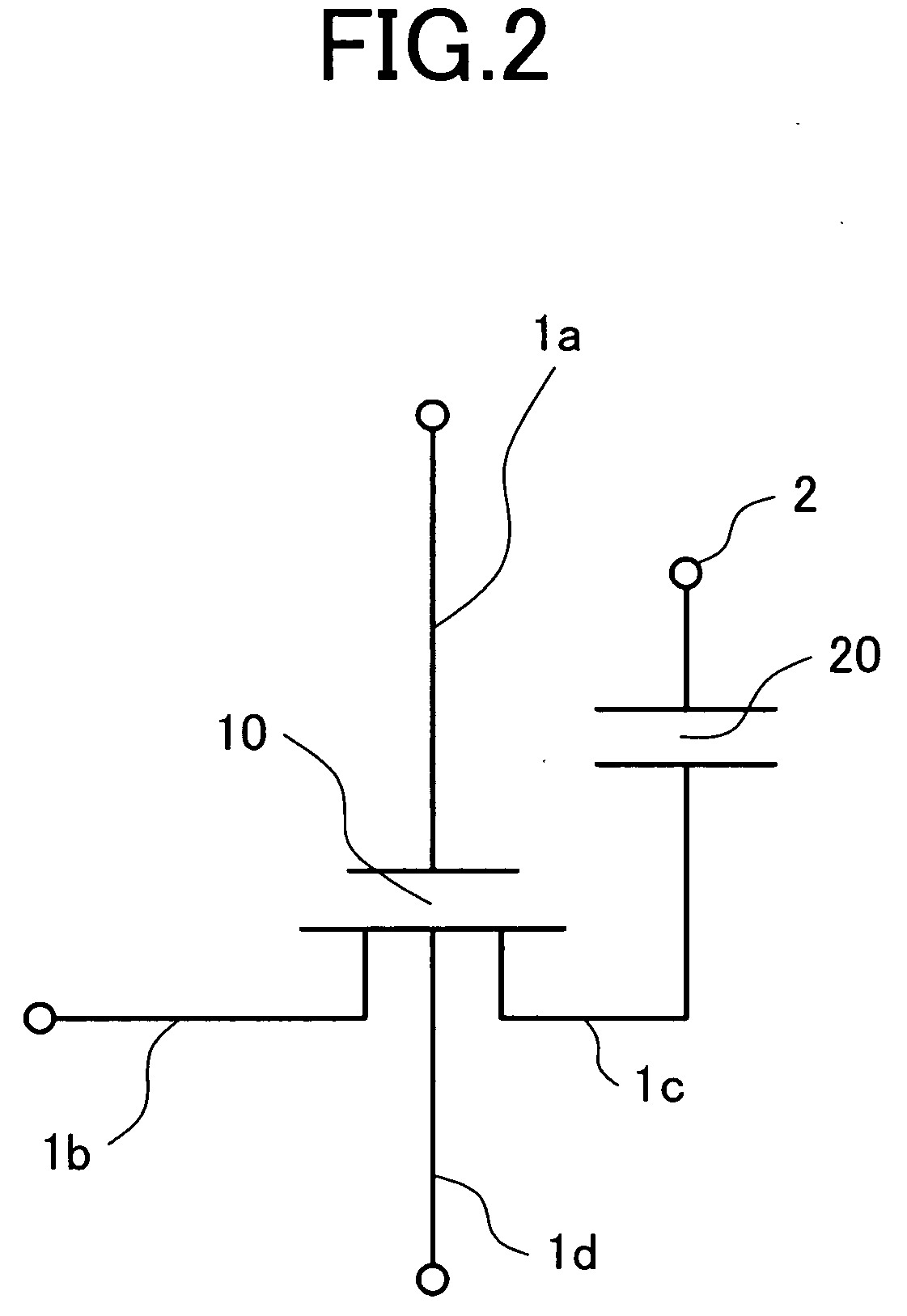Dynamic random access memories and method for testing performance of the same
a random access memory and dynamic technology, applied in the direction of information storage, static storage, digital storage, etc., can solve the problems of data retention time being shorted, retention failure, and extremely low frequency of vrt failure occurren
- Summary
- Abstract
- Description
- Claims
- Application Information
AI Technical Summary
Benefits of technology
Problems solved by technology
Method used
Image
Examples
first embodiment
[0041]FIG. 1 illustrates a procedure of testing for a VRT failure screening according to a first embodiment of the present invention. This is a pause / refresh test based on a configuration starting by writing “1” to a memory cell followed by a pause for tPAUSE seconds and reading thereafter. For tPAUSE, an actual time of an interval of refresh time for operating a product or a slightly longer time than the same is selected. A cell that caused an error during the reading is regarded as a fail cell and a redundancy remedy is attempted (FIG. 1, (2)). The chip that caused an error here again is regarded as a defective product (FIG. 1, (4)). When all of the memory cells passes the test at the reading after the pause (FIG. 1, (1)), or when the redundancy remedy is valid (FIG. 1, (3)), the test described above is repeated for a specified number of repetition (Ncont). The pause of tPAUSE seconds described above may not be equal for each time of repetition.
[0042] When a chip under test inclu...
second embodiment
[0049]FIG. 7 shows a test procedure of testing for a VRT failure screening according to a second embodiment, and FIGS. 8 to 12 detail the bias conditions for testing. The feature of the present embodiment (FIG. 7) is to produce a state in which a high bias in the reverse direction is applied to the PN junction on the storage node side of the memory cell (FIG. 9) or a state in which an electric field is not present (FIG. 11) before each testing for the repeated pause / refresh test shown in FIG. 1. As described below, with the present embodiment, the VRT failures can be screened in a shorter time and more reliably than the first embodiment.
[0050] In order to reduce the time for screening the VRT failures, it is necessary to accelerate elicitation of the VRT failures, namely to increase the occurrence rate of the bad state per unit of time.
[0051] As a result of investigation for the occurrence rate of the bad state using some memory cells having the VRT failures as samples, the occurr...
third embodiment
[0064]FIG. 13 shows a test procedure of testing for a VRT failure screening according to a third embodiment, and FIGS. 14 and 15 detail the bias conditions for testing. The feature of the present embodiment (FIG. 13) is that the step of voltage application in the electric field-free state in the repeated pause / refresh test described in the second embodiment is replaced by a step of bias application in the forward direction (FIG. 14).
[0065] It was stated in the second embodiment that the bad state more easily appears in some of the memory cells having the VRT failures when the bias (in the reverse direction) lower than writing “1” is applied to the PN junction on the storage node side. When the forward bias was applied to such a memory cell, it was found that the occurrence rate of the bad state increased as with the case of applying the low bias in the reverse direction.
[0066]FIG. 15 shows an example of the bias state in each terminal when the forward bias is applied immediately b...
PUM
 Login to View More
Login to View More Abstract
Description
Claims
Application Information
 Login to View More
Login to View More - R&D
- Intellectual Property
- Life Sciences
- Materials
- Tech Scout
- Unparalleled Data Quality
- Higher Quality Content
- 60% Fewer Hallucinations
Browse by: Latest US Patents, China's latest patents, Technical Efficacy Thesaurus, Application Domain, Technology Topic, Popular Technical Reports.
© 2025 PatSnap. All rights reserved.Legal|Privacy policy|Modern Slavery Act Transparency Statement|Sitemap|About US| Contact US: help@patsnap.com



